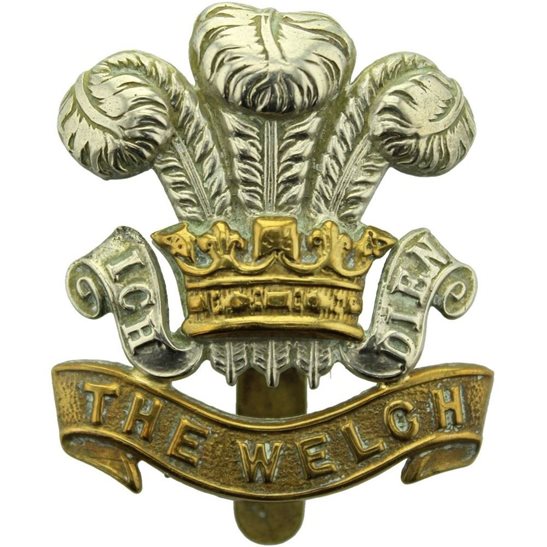Personal Details
Born: 1 April 1885 in Whitchurch, Shropshire and baptised 21 June the same year at Christ Church, Tilstock, Shropshire.
Family: He was one of at least four children born to Richard Sumner, a labourer, and his wife Eliza. He married Annie Gregory in 1909 in Whitchurch. The couple had six children: George Henry, John, Martha, Arthur F, Freda H and Vera A.
Residence: In 1891 he was living with his parents in Tilstock Village, but ten years later he was a boarder at The Heath, Tilstock. In 1911 and married, he had moved to 4 Hollins Lane, Tilstock. An address of 6 St. John`s Street was given for him on the 1919 Absent Voters` List for Whitchurch. By 1939 he was living at 21 Claypit Street, Whitchurch and at the time of his death in 1958, 19 Queensway, Whitchurch.
Employment: He was an agricultural labourer.
Died: In 1958, at The Cottage Hospital, Whitchurch and buried 30 April the same year at Whitchurch cemetery, aged 72.
Military Details
Regiment: Welsh Regiment (previously King`s Shropshire Light Infantry)
Rank: Private
Service Number: 66938 (previously 24995)
Date of Enlistment: Not known
Date of Discharge: Not known
Reason for Discharge: Not known
Arthur was awarded the Campaign Medals (British War Medal and Victory Medal)

The British War Medal (also known as 'Squeak') was a silver or bronze medal awarded to officers and men of the British and Imperial Forces who either entered a theatre of war or entered service overseas between 5th August 1914 and 11th November 1918 inclusive. This was later extended to services in Russia, Siberia and some other areas in 1919 and 1920. Approximately 6.5 million British War Medals were issued. Approximately 6.4 million of these were the silver versions of this medal. Around 110,000 of a bronze version were issued mainly to Chinese, Maltese and Indian Labour Corps. The front (obv or obverse) of the medal depicts the head of George V. The recipient's service number, rank, name and unit was impressed on the rim.
The Allied Victory Medal (also known as 'Wilfred') was issued by each of the allies. It was decided that each of the allies should each issue their own bronze victory medal with a similar design, similar equivalent wording and identical ribbon. The British medal was designed by W. McMillan. The front depicts a winged classical figure representing victory. Approximately 5.7 million victory medals were issued. Interestingly, eligibility for this medal was more restrictive and not everyone who received the British War Medal ('Squeak') also received the Victory Medal ('Wilfred'). However, in general, all recipients of 'Wilfred' also received 'Squeak' and all recipients of The 1914 Star or The 1914/1915 Star (also known as 'Pip') also received both 'Squeak' and 'Wilfred'. The recipient's service number, rank, name and unit was impressed on the rim.

